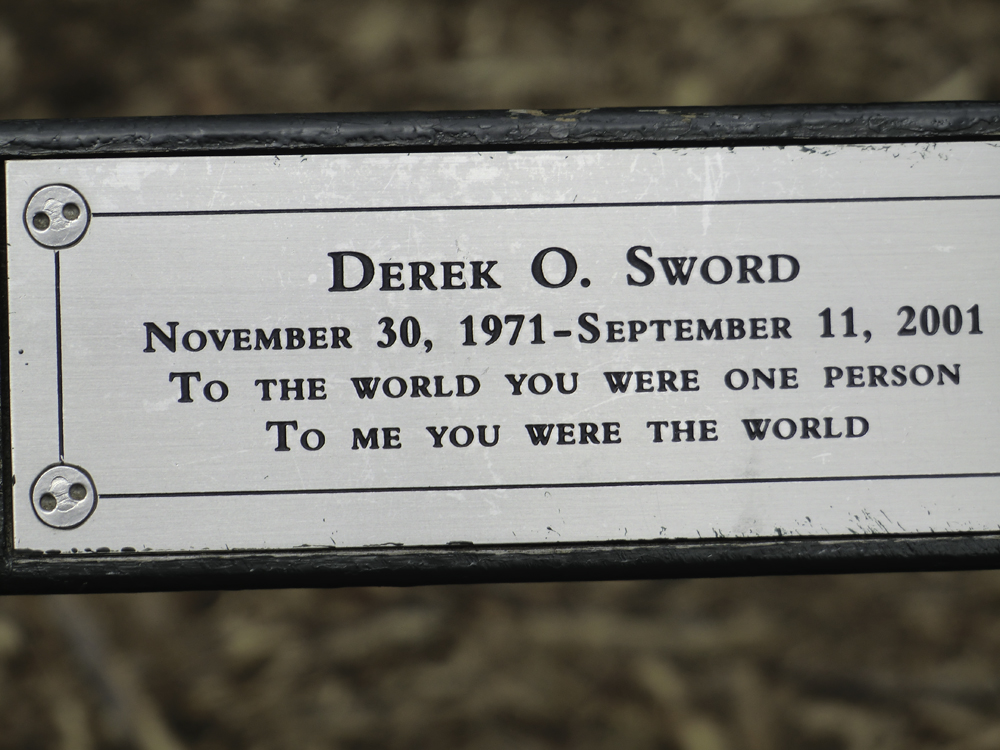Remembrance
I have taken to reading . . . and beginning to chronicle . . . the plaques on New York City’s park benches. There are thousands of stories on these small bronzes, and there is probably, too, one huge story about a city and its people. Several of the plaques are in memory of victims of World Trade Center victims, such as this one to Derek Sword, so poignant in its aching simplicity.
I had intended to write about Sergeant Robert Bales and the killing of 16 people, mostly children in the village of Panjwai, Afghanistan, having as little insight to shed as others. The story became even more difficult with this morning’s news that a gunman had killed four people, three of them children, outside a Jewish school in Toulouse, France.
I have no generalizations to offer, other than we don’t need generalizations. For days, the U.S. government did not identify Sgt. Bales, which seemed such a contrast to the almost immediate release of the name of Major Nidal Malik Hasan, who killed 13 people at Fort Hood in 2009. With the identification of Sgt. Bales has come an effort to humanize him, to wonder how he could have committed such an atrocity. This is a consideration we must extend to Maj. Hasan.
For the perpetrators and the victims are people, not members of a group, Abdal Samad lost his wife, four young daughters and four young sons at the hands of Sgt. Bales. A father and his two children were killed in Toulouse.
We need to look through the categories and see the people. And we must not, as Kate Wenner wrote yesterday, “lose our memory when it comes to the consequences of wars fought far from home.”

